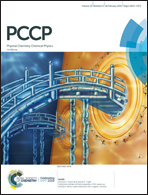Inhomogeneous membrane receptor diffusion explained by a fractional heteroscedastic time series model†
Abstract
Single particle tracking experiments have recently uncovered that the motion of cell membrane components can undergo changes of diffusivity as a result of the heterogeneous environment, producing subdiffusion and nonergodic behavior. In this paper, we show that an autoregressive fractionally integrated moving average (ARFIMA) with noise given by generalized autoregressive conditional heteroscedasticity (GARCH) can describe inhomogeneous diffusion in the cell membrane, where the ARFIMA process models anomalous diffusion and the GARCH process explains a fluctuating diffusion parameter.



 Please wait while we load your content...
Please wait while we load your content...